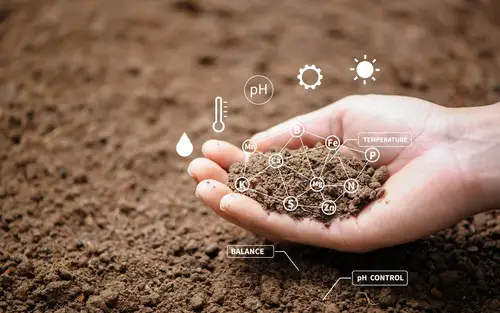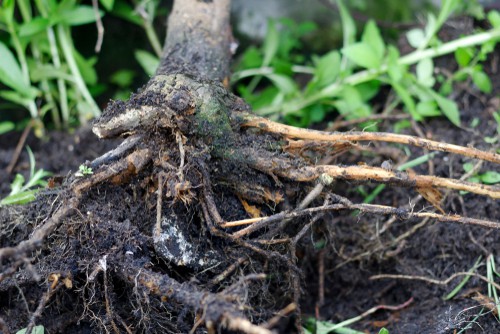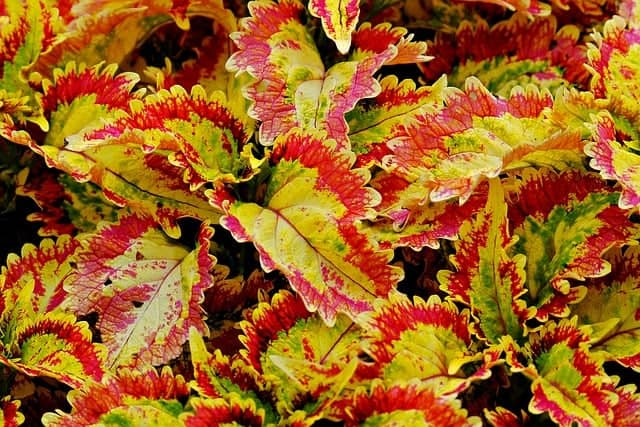Coleus plants are known for their vibrant and colorful foliage, which can add a pop of color to any garden or indoor space. However, Coleus Leaves Turning Yellow can be a cause for concern among gardeners and plant enthusiasts. Yellowing leaves can indicate a variety of issues that may be harmful to the plant’s health.
Understanding the causes of yellowing leaves is crucial in diagnosing and treating the problem. Overwatering, underwatering, extreme temperatures, overexposure to sunlight, nutrient deficiencies, and pests and diseases are some of the common causes of yellowing leaves in coleus plants.
Proper care and maintenance, including regular watering, fertilization, and pruning, can help keep the plant healthy and prevent yellowing leaves.
Key Takeaways
- Yellowing leaves in coleus plants can indicate a variety of issues that may be harmful to the plant’s health.
- Common causes of yellowing leaves include overwatering, underwatering, extreme temperatures, overexposure to sunlight, nutrient deficiencies, and pests and diseases.
- Proper care and maintenance, including regular watering, fertilization, and pruning, can help keep the plant healthy and prevent yellowing leaves.
Check out these other popular posts:
Understanding Coleus Plants

Coleus plants, also known as Plectranthus scutellarioides, are a popular choice for gardeners who want to add some color and texture to their outdoor or indoor garden. These tropical plants are native to Southeast Asia and are well-known for their vibrant foliage, which comes in a wide range of colors and patterns.
Coleus plants are typically grown as annuals, but they can also be grown as perennials in warmer climates. They are relatively easy to care for and can thrive in a variety of growing conditions, making them a great choice for both novice and experienced gardeners.
One of the most important things to keep in mind when growing coleus plants is that they prefer bright, indirect sunlight. Too much direct sunlight can cause damage to the leaves, including yellowing or brown spots. It’s important to find a spot with bright but indirect sunlight to prevent further damage.
Another common cause of yellowing leaves in coleus plants is overwatering or underwatering. These plants prefer well-drained soil and should be watered regularly, but not too frequently. Overwatering can lead to root rot and other issues, while underwatering can cause the leaves to dry out and turn yellow.
Regular maintenance, such as removing yellow leaves and fertilizing every two weeks, can help keep coleus plants healthy and vibrant. It’s also important to keep an eye out for signs of disease or pests, such as downy mildew or spider mites, and take action promptly to prevent further damage.
Identifying Yellowing Leaves
Yellowing leaves are a common problem with coleus plants. It can be caused by a variety of factors, including overexposure to sunlight, nutrient deficiencies, and disease. Identifying yellowing leaves is important in order to determine the underlying cause and take the appropriate action to remedy the situation.
One of the most obvious signs of yellowing leaves is the yellow coloration itself. The leaves may turn completely yellow or develop yellow spots or streaks. In some cases, the yellowing may be accompanied by other symptoms, such as wilting, curling, or browning of the leaves.
It is important to note that not all yellowing leaves are a cause for concern. Coleus plants naturally shed their older leaves as they grow, and these leaves may turn yellow before falling off. However, if the yellowing is widespread or affecting new growth, it is likely a sign of a problem.
To determine the cause of yellowing leaves, it is important to examine the plant and its growing conditions. Some possible causes and their identifying symptoms include:
- Overexposure to sunlight: Leaves may develop yellow spots or streaks, especially on the side of the plant facing the sun.
- Nutrient deficiencies: Leaves may turn pale yellow or develop yellow veins. Other symptoms may include stunted growth and smaller leaves.
- Disease: Leaves may develop brown or black spots, or white or gray fuzz. The plant may also appear wilted or stunted.
In addition to these causes, yellowing leaves may also be a sign of overwatering or underwatering. In these cases, the leaves may turn yellow and wilted, or dry and brown.
Coleus Leaves Turning Yellow – 4 Common Problems
Coleus plants are known for their vibrant, colorful foliage, but yellowing leaves can be a common issue that gardeners encounter. Understanding the causes of yellowing leaves is crucial to saving the plant and preventing further damage. Here are some of the most common causes of yellowing leaves in coleus plants.
1. Overwatering
Overwatering is one of the most common causes of yellowing leaves in coleus plants. When the roots of the plant are constantly submerged in water, they can’t get enough oxygen, leading to root rot.
This can cause the leaves to turn yellow and eventually fall off. To avoid overwatering, make sure the soil is well-draining and only water the plant when the top inch of soil is dry to the touch.
2. Underwatering
On the other hand, underwatering can also cause yellowing leaves in coleus plants. When the plant doesn’t get enough water, it can’t absorb the necessary nutrients, causing the leaves to turn yellow and eventually dry out. To avoid underwatering, make sure to water the plant regularly and consistently, especially during hot and dry weather.
3. Extreme Temperatures and Sunlight

Coleus plants prefer warm, humid environments and can be sensitive to extreme temperatures and direct sunlight. Exposure to too much sun can cause the leaves to turn yellow and even develop sunscald. To prevent this, consider placing the plant in a shaded area or providing some form of shade during the hottest part of the day.
4. Diseases and Infections
Yellowing leaves can also be a sign of diseases and infections, such as fungal infections or impatiens necrotic spot virus (INSV). These infections can cause the leaves to turn yellow and eventually wilt or fall off.
To prevent infections, make sure to keep the plant well-ventilated and avoid overcrowding. If you suspect an infection, consider removing the affected leaves or treating the plant with a fungicide.
Role of Light and Water
Coleus plants require adequate water and light to grow and thrive. The amount of light and water they receive can have a significant impact on the health and color of their leaves.
Lighting
Coleus plants prefer partial shade to full sun, making them ideal for growing in areas with filtered light. When exposed to high light intensity, many coleus varieties change pigmentation by increasing anthocyanin amount and decreasing chlorophyll content.
The physiological and molecular mechanisms involved in this phenomenon have been investigated in two independent studies.
Watering
Overwatering and underwatering are common causes of yellowing coleus leaves. When the roots of the plant are constantly sitting in water, it can lead to root rot and cause the leaves to turn yellow or brown. On the other hand, if the plant is under water, the leaves will also turn yellow and dry up.
It is important to maintain the soil moisture at a consistent level. The soil should remain slightly moist but not wet. In cool shade, they will not need to be watered as often to keep the soil moist. In bright light and heat, daily watering may be needed to keep the soil moist.
Adjust watering needs for the soil condition – rich organic matter will retain more moisture than a clay-laden soil [
Regular maintenance, like removing yellow leaves and fertilizing every two weeks, can also help keep the plant healthy
In summary, the proper amount of lighting and watering is crucial to maintaining the health and color of coleus leaves. Providing them with partial shade, consistent soil moisture, and regular maintenance will help keep them looking vibrant and healthy.
Importance of Proper Drainage

Proper drainage is essential for keeping coleus plants healthy and vibrant. When water is not able to drain properly, it can lead to waterlogged soil, which can cause the roots to rot and the leaves to turn yellow.
To ensure proper drainage, it is important to use a well-drained soil mix when planting coleus. Well-drained soil allows excess water to drain away quickly, preventing it from accumulating around the roots.
A good potting mix should contain a mix of organic and inorganic materials, such as peat moss, perlite, and vermiculite, to help improve drainage and aeration.
In addition to using a well-drained soil mix, it is also important to choose a pot with drainage holes. Without drainage holes, excess water will accumulate in the bottom of the pot, leading to poor drainage and waterlogged soil.
If the coleus plant is already showing signs of yellowing leaves due to poor drainage, it may be necessary to repot the plant with fresh potting soil. When repotting, be sure to remove any dead or rotting roots and choose a pot that is slightly larger than the current one to allow room for growth.
Influence of Nutrient Deficiencies
Yellowing leaves on coleus plants can also indicate a nutrient deficiency. Nitrogen deficiency is one of the most common culprits, which causes pale yellowing of older leaves. Other nutrient deficiencies, such as potassium, phosphorus, iron, and magnesium, can also cause yellowing of leaves.
To ensure that your coleus plant is receiving enough nutrients, it is important to fertilize regularly with a balanced fertilizer. A balanced fertilizer contains equal parts of nitrogen, phosphorus, and potassium. Applying compost to the soil can also provide additional nutrition to the plant.
It is important to note that over-fertilization can also harm the plant, causing leaf burn or death. It is recommended to fertilize every two weeks during the growing season and reduce fertilization during the dormant season.
If the plant shows signs of nutrient deficiency, it is important to identify the specific nutrient that is lacking. This can be done by conducting a soil test or consulting a gardening expert. Once the specific nutrient deficiency is identified, it can be addressed by applying the appropriate fertilizer or soil amendment.
Common Pests and Diseases
Yellowing of coleus leaves can also be caused by pests and diseases. Identifying and treating the problem early can prevent the spread of the issue and save the plant. Here are some common pests and diseases that can cause yellowing of coleus leaves:
Pests

Mealybugs
Mealybugs are small insects that feed on the sap of the plant. They appear as white, cottony masses on the stems and leaves. Mealybugs can cause yellowing, curling, and wilting of the leaves. To control mealybugs, wipe the leaves with a cotton swab dipped in rubbing alcohol or use an insecticidal soap.
Spider Mites
Spider mites are tiny pests that suck the plant’s sap and cause yellowing of the leaves. They spin webs on the leaves and stems, which can be seen with the naked eye. Spider mites thrive in hot and dry conditions. To control spider mites, spray the plant with water to wash off the webs and use an insecticidal soap.
Aphids
Aphids are small, pear-shaped insects that feed on the sap of the plant. They can cause yellowing, curling, and wilting of the leaves. Aphids secrete a sticky substance called honeydew, which attracts ants and can lead to the growth of sooty mold. To control aphids, use an insecticidal soap or spray the plant with water.
Slugs
Slugs are mollusks that feed on the leaves of the plant. They leave holes in the leaves and can cause yellowing and wilting. To control slugs, use a slug bait or trap.
Diseases
Fungus
Fungal infections can cause yellowing of the leaves. The most common fungal infections are powdery mildew, downy mildew, and leaf spot disease. Powdery mildew appears as a white, powdery coating on the leaves.
Downy mildew appears as yellow spots on the leaves, which later turn brown. Leaf spot disease appears as black spots with yellow ringspots on the leaves. To control fungal infections, remove the infected leaves and use a fungicide.
Yellowing of coleus leaves can be caused by a variety of factors, including pests and diseases. Identifying and treating the problem early can prevent the spread of the issue and save the plant.
Maintenance and Care for Coleus
Coleus plants are relatively easy to care for and maintain, but they do require some attention to keep them healthy and looking their best. Here are some tips for maintaining and caring for your coleus plants:
1. Watering
Coleus plants prefer consistently moist soil, so it’s important to water them regularly. However, be careful not to overwater them, as this can lead to root rot and other problems. Check the soil moisture regularly and water your plant when the top 1-2 inches of soil feels dry.
Underwatering is also a common culprit of yellow leaves in coleus plants. When the plant’s soil doesn’t receive enough water, the roots can’t absorb nutrients and moisture, resulting in wilted or limp leaves.
2. Soil

Coleus plants prefer fertile, well-draining soil. They can develop root rot and fungal diseases in poorly drained soil. Areas that retain water or containers that don’t drain well will not be favorable for coleus.
If your plant is root-bound, it may be time to repot it. Transplant shock can cause wilting and stunted growth, so be sure to water your plant well after repotting.
3. Light
Coleus plants prefer bright, indirect light. Too little light causes weak, spindly growth, while too much direct sunlight can scorch the leaves. If your coleus plant is not getting enough light, consider using grow lights to supplement natural light.
4. Fertilizer
Coleus plants benefit from regular fertilization. Nitrogen deficiency is one of the most common culprits of yellowing leaves in coleus plants, which causes pale yellowing of older leaves. Use a balanced fertilizer every two weeks during the growing season to keep your coleus plant healthy and vibrant.
5. Pests and Diseases
Coleus plants can be prone to pests such as aphids, spider mites, and whiteflies. Keep an eye out for any signs of infestation, such as yellowing or spotted foliage, and treat with an appropriate insecticide.
Brown spots on coleus leaves can be caused by fungal diseases, which can be treated with a fungicide. Leaching the soil with water can help prevent salt buildup, which can also cause yellowing leaves.
Diagnosing and Treating Problems
When coleus leaves start turning yellow, it’s important to diagnose the problem and take action to treat it. Here are some common issues that can cause yellowing leaves and how to address them.
Overwatering and Waterlogged Soil
Overwatering is one of the most common causes of yellow leaves in coleus plants. When the roots become overwhelmed with moisture, they can’t absorb it all, leading to waterlogged soil. This can cause the leaves to turn yellow and wilt.
To diagnose this problem, check the soil moisture level by sticking your finger about an inch into the soil. If it feels wet or soggy, your plant is likely overwatered. To treat the issue, cut back on watering and allow the soil to dry out before watering again. You may also need to repot the plant into fresh, well-draining soil.
Root Rot

Root rot is another issue that can cause yellowing leaves in coleus plants. This condition occurs when the roots become infected with a fungus or bacteria, causing them to decay. This can lead to yellowing leaves, as well as limp and distorted foliage.
To diagnose root rot, gently remove the plant from its pot and inspect the roots. Healthy roots should be firm and white, while infected roots will be brown and mushy. If you suspect root rot, you may need to take a lab test to confirm the diagnosis.
To treat root rot, remove any infected roots and repot the plant in fresh soil. You can also try using a fungicide or neem oil to help control the spread of the disease.
Environmental Stress
Coleus plants can be sensitive to changes in their environment, such as wet weather or extreme temperatures. This can cause yellowing leaves, as well as blackish or purplish coloration and tip dieback.
To diagnose environmental stress, consider any recent changes in your plant’s surroundings. If you’ve recently moved it to a new location or experienced extreme weather conditions, this could be the issue. To treat the problem, try to maintain consistent environmental conditions, such as temperature and humidity levels.
Pests
Pests such as spider mites and aphids can also cause yellowing leaves in coleus plants. These insects feed on the foliage, causing it to turn yellow and distorted.
To diagnose a pest problem, inspect the leaves and stems of your plant for signs of insect activity. You may see small webs or tiny insects on the foliage. To treat the problem, use an insecticidal soap or neem oil to control the pests. You may also need to prune away heavily infested foliage.
Frequently Asked Questions
How to save an overwatered coleus?
Overwatering is one of the most common reasons for yellowing of coleus leaves. If you suspect that your coleus plant has been overwatered, the first step is to stop watering it immediately.
Allow the soil to dry out completely before watering it again. If the soil is waterlogged, you may need to repot the plant in fresh soil. Make sure that the new pot has drainage holes to prevent water from accumulating at the bottom.
What causes coleus leaves to turn yellow?
Yellowing of coleus leaves can be caused by various factors, including overwatering, underwatering, nutrient deficiencies, pests, and diseases. Overwatering and waterlogged soil are among the most common causes of yellow leaves in coleus plants.
When you overwater your coleus plant, the roots can become overwhelmed and unable to absorb the excessive moisture. This can lead to root rot, which can cause the leaves to turn yellow.
What does it mean when coleus leaves turn white?
White spots on coleus leaves can be a sign of powdery mildew, a fungal disease that affects many plants. Powdery mildew appears as a white, powdery substance on the leaves, stems, and flowers of the plant.
It can be caused by high humidity, poor air circulation, and low light levels. To prevent powdery mildew, make sure that your coleus plant is in a well-ventilated area with good air circulation. You can also treat the plant with a fungicide.
Why are my coleus leaves crispy?
Crispy or dry coleus leaves can be caused by underwatering or low humidity. When a plant is not getting enough water, the leaves can become dry and brittle.
To prevent this, make sure that you water your coleus plant regularly and keep the soil moist but not waterlogged. Low humidity can also cause dry leaves, so consider using a humidifier or misting the leaves with water.
What can I do if my coleus leaves are falling off?
If your coleus leaves are falling off, it could be a sign of stress caused by environmental factors such as temperature changes, light levels, or pests. It could also be a sign of nutrient deficiencies or diseases.
To prevent leaf drop, make sure that your coleus plant is in a stable environment with consistent temperature and light levels. You can also fertilize the plant with a balanced fertilizer and treat it with pesticides if necessary.
Why is my coleus plant losing its color?
Coleus plants are known for their vibrant colors, but if your plant is losing its color, it could be a sign of nutrient deficiencies or pests. Nutrient deficiencies, particularly of nitrogen, can cause the leaves to turn yellow or pale.
Pests such as spider mites and aphids can also cause discoloration. To prevent color loss, make sure that your coleus plant is getting enough nutrients and sunlight. You can also treat it with pesticides if necessary.

Hey, I’m Lisa and I’ve been an avid gardener for over 30 years. I love writing, talking and living in the garden! Feel free to connect with me on my socials below


